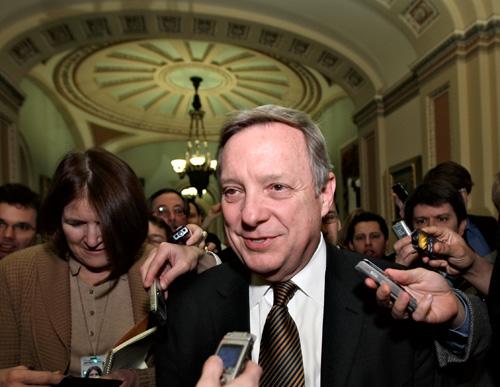WHO GETS WHAT: Billions to colleges and students
Feb 9, 2009
Last updated on May 13, 2016 at 07:50 p.m.
DURHAM, N.C. – The stimulus plan emerging in Washington could offer an unprecedented, multibillion-dollar boost in financial aid for college students trying to pursue a degree while they ride out the recession.
It could also hand out billions to the states to kick-start idled campus construction projects and help prevent tuition increases at a time when families can least afford them.
But cuts of $40 billion for state and local governments in the Senate version were a big disappointment for college leaders. House-Senate negotiations will determine whether education aid to the states is relatively modest or massive – and how much gets directed to high-need institutions for building projects, versus elite universities that would benefit if the final package spends more of the money on scientific research.
Students are big winners. Both the House and Senate bills call for the largest-ever funding increase for Pell Grants, the government’s chief college aid program for low-income students.
Get The Daily Illini in your inbox!
It will take much of the proposed $15.6 billion increase in the House version (slightly less in the Senate) just to erase the existing funding shortfall and meet the surging demand as the economy sours and more students enroll.
But the package would also increase next year’s maximum award by up to $500 – to $5,350 – starting July 1. That’s the biggest increase in history and would cover three-quarters of the cost of the average public four-year college.
Most Pell recipients come from families earning less than $40,000. And supporters note the new Pell dollars would be spent almost immediately – students can’t save them – while also paying off down the road.
“Long-term, if we want a better economy, we need more people going to college,” Education Secretary Arne Duncan told The Associated Press last week.
College leaders meeting in Washington this week for the American Council on Education’s annual meeting will be grateful for the student aid boost. But they’ll be closely watching how Congress bridges the huge gaps between how much the House and Senate versions propose spending to bail out state budgets and prevent drastic education cuts.
The House bills calls for $79 billion to prevent cuts to local school districts and public higher education. But it’s not yet clear how the money might be divided between K-12 and higher education, and a portion could go to things besides education. The Senate version calls for $39 billion.
Meanwhile, colleges are hoping Congress will agree restarting idled building projects is an efficient short- and long-term investment. As they lose revenues from state support, endowments and tuition, hundreds of projects are on hold nationwide, from a library extension at Fresno State to new dorms at Washington University in St. Louis and a biology lab at Yale.
The California State University system alone has halted 130 projects, which it values at $850 million and says account for 13,000 jobs. Meanwhile, the system may have to cut 10,000 enrollment slots.
The House bill has $6 billion for such projects, while the Senate has none.
“We’re ready to go, there’s great jobs involved, and we’re educating kids who wouldn’t have other opportunities if we weren’t there,” Chuck Middleton, president of Roosevelt University in downtown Chicago, said Sunday. His university has a $135 million new building with classrooms, labs, dorms and offices on hold after financing dried up. Construction could be under way in six months, he says, providing 600 jobs for two years while helping Roosevelt’s diverse student body.
Also helping students, the House and Senate both call for expanding the Hope tuition tax credit from $1,800 to $2,500 and making it partly refundable. Now, almost half of families with children pay no income tax, so the current tuition tax-credit system doesn’t help them (the full benefit kicks in for families earning at least $43,000).






